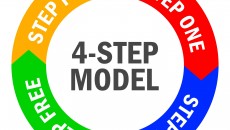As leaders and managers, all of us have dealt with issues of trust at work at some point in our careers – be it with our teams, our peers, the management, customers etc. Anybody who has worked in the corporate world will vouch for the fact that organizations that have a high ‘trust quotient’ in general tend to have more engaged employees; while organizations that exhibit ‘trust deficit’ usually have employees that are low on morale and engagement. Although trust can be damaged by a perceived lack of competence, trust is most commonly eroded by issues of integrity and intent. When team members have confidence in the integrity and intent of a leader, they may be more willing to overlook perceived gaps in capability or results. On the other hand, when there is mistrust of the character of a leader, no amount of capability and no level of business results will ever be enough to overcome the trust deficit. Inevitably, the lack of perceived character will catch up.
Most people are well-intentioned and never set out with the goal of damaging trust. Trust is broken unintentionally through behaviours that cause those around us to question our integrity and intent. While there are many ways this can occur, there are five simple types of common trust breaking behaviours or trust traps that you should be aware of.
These are:
- Making Assumptions – When we assume things about certain people or situations without examining our assumptions, it can erode both our trust in others and their trust in us. In addition, the assumptions we make about people can prevent us from investing valuable time and energy in their development.
- Breaking Promises – Perhaps the fastest way to destroy trust is by breaking promises. Even when the promise is broken for reasons outside of our control, broken promises always cause people to question whether or not we are to be trusted.
- Covering Oneself – When we cover ourselves by shifting the blame for mistakes and refusing accountability, it causes people to question both our integrity and intent.
- Spreading Rumours – Most people enjoy the feeling of being “in the know”; however, when we actively spread rumours about others it cuts at the heart of trust. Even if the person who we are spreading rumours about never knows of our involvement, each person who we shared the information with will be suspicious of us the next time that they are the subject of office gossip.
- Bypassing People – While following chains of command can temporarily slow down work processes, when we bypass people it casts them in a bad light and creates doubt about our intentions.
As we become aware of these trust traps, we can actively work towards avoiding these behaviours. In addition, if we see members of your team engaging in such behaviours, it falls upon us to clarify that this is unacceptable. When we take a public stand against trust breaking behaviour and back it up with our own actions, the effect is always positive – it ends up building others’ trust in us and leads to a healthier working environment.





